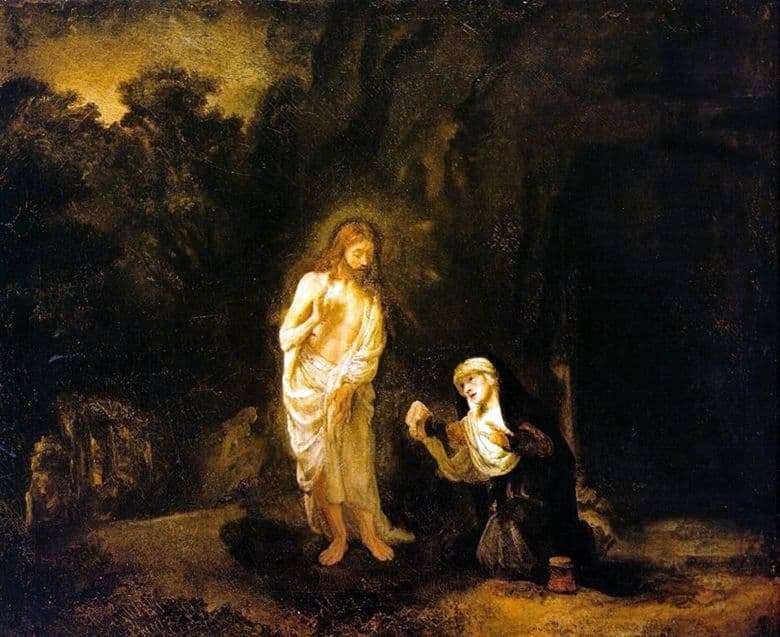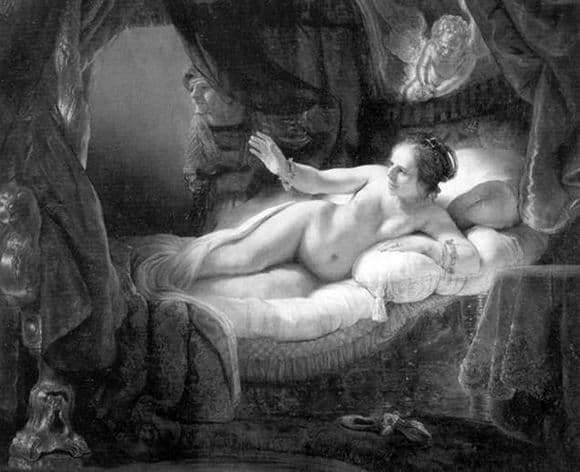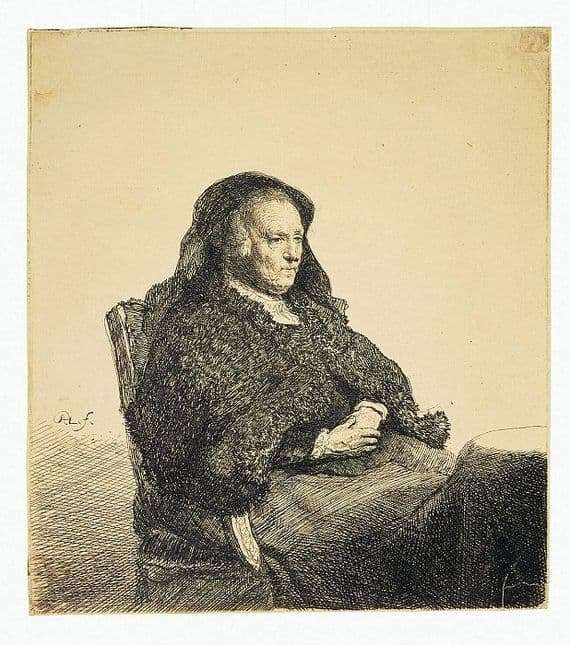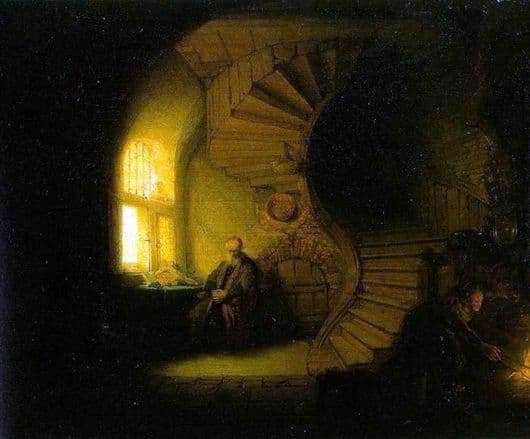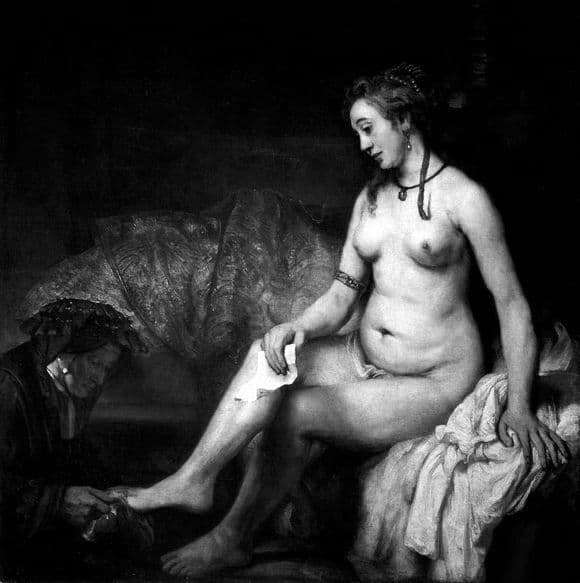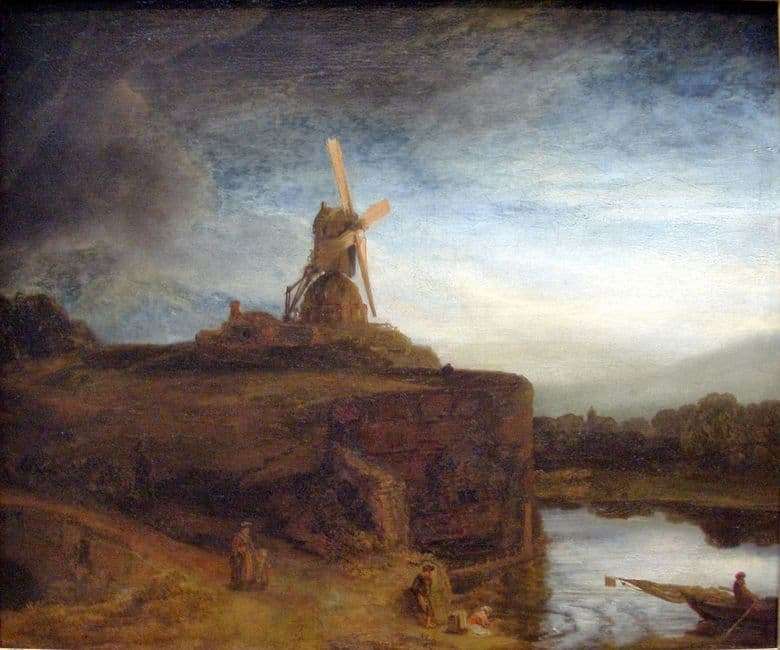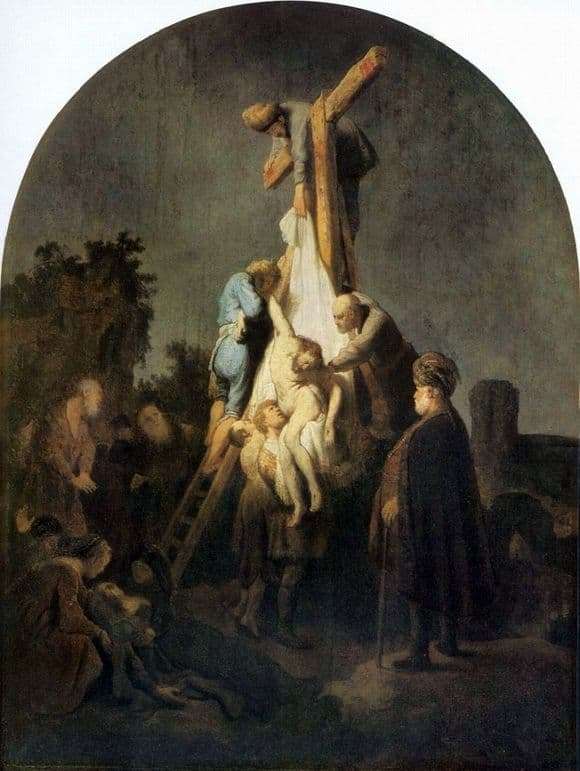
Cloth created in 1634
Rembrandt never expresses direct protest. But the ideal of man he created completely contradicts the reality of that time.
There are real passions in his paintings. Theater drama miraculously gives way to those events that actually occur in life. That is what we see in the legendary picture of the artist.
The canvas depicts the night. There is oppressive silence. A crowd of people surrounds Christ, who is crucified on the cross. They all came here to spend the last journey of their teacher. People very carefully remove the body of Christ.
We see a man who climbed onto the ladder and pulls out nails. Other people gently hold the body. At this time, women are busy preparing the bed. All actions are done very slowly. There is a respectful sad silence. Everyone experiences, but in different ways.
Some people express despair, others – grief, and still others – horror. But all those present are keenly aware of the significance of the event that takes place. The old man taking the body, infinitely grieves. Maria was completely exhausted. She is no longer able to stand, and she falls unconscious into the hands of the people around her. The pallor of her face and lifeless dangling hands are striking.
The picture attracts viewers of true life and incredible penetration. Only slightly exaggerated gestures and movements remind of the baroque hobbies. The rest of the picture is as realistic as possible.
In this work, the painter sounds an important idea that people can bring together some severe trials or great events in life. In the art of the artist originated completely new trends. The canvas anticipates the drama of incredible depth, which will show through in later masterpieces.
Description of the painting by Rembrandt Harmens van Rijn “The Descent from the Cross”
